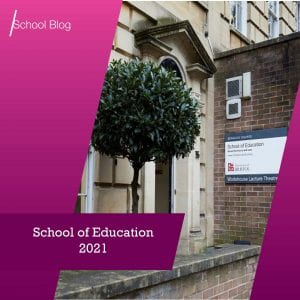 Post written by Victoria Bowen, PhD Researcher in Education, University of Bristol.
Post written by Victoria Bowen, PhD Researcher in Education, University of Bristol.
On 12th March 2020, the World Health Organisation declared the coronavirus disease 2019 (COVID-19) outbreak to be a pandemic. What followed this announcement was to become the largest global disruption to education in history. 1.6 billion learners in 190 countries were affected, as nations implemented regional lockdowns and school closures to curtail the spread of COVID-19 (UN, 2020). Since then, as the virus circulated widely in society across the globe, school closures have been implemented nationally, regionally, locally, and reactively based on infection rates. This article follows on from my presentation on ‘COVID-19, school closures and inequality’ at the TLC roundtable event (March 2021). It summarises the immediate education policy response relating to COVID-19 in English schools.
In England, national school closures were announced by the government on 23rd March 2020 with the stated aim of ‘reducing transmission of coronavirus (COVID-19), to protect the NHS and save lives’ (Gov.UK). Legislation enacted on 25th March 2020 in the form of the Coronavirus Act 2020, further strengthened national powers to shut educational institutions to almost all pupils. Children of critical workers were encouraged to attend school, as were vulnerable children, including those who are looked-after, have an education, health and care (EHC) plan and those who have been identified as being vulnerable and who could therefore benefit from continued full-time attendance (Gov.UK). While there is an acknowledgement that school attendance data has been inconsistently reported since March 2020, the headline figures for 17th April 2020 showed that while 61 per cent of schools were open only 0.9 per cent of pupils were attending at this time (Gov.UK).
From 1st June 2020, primary schools welcomed back pupils in reception, year 1 and year 6, alongside the priority groups outlined above, and from 15th June it was expected that secondary schools would also offer some face-to-face support for pupils in year 10 and year 12. However, by the 18th June 2020 only 34 per cent of year 6 pupils and 10 per cent of year 10 pupils were attending; and by just before the summer holidays this number had only increased modestly to 44 per cent and 14 per cent respectively (Gov.UK). These figures highlight the potential disadvantage to those not attending, especially as at this time there was no requirement for schools to offer online learning.
By the end of August 2020, it was the government’s view that ‘the prevalence of coronavirus (COVID-19) has decreased, our NHS Test and Trace system is up and running and we are clear about the measures that need to be in place to create safer environments within schools’ (Gov.UK). This meant that all pupils, in all year groups, returned to school full-time from the beginning of the Autumn term 2020.
‘Returning to school is vital for children’s education and for their wellbeing. Time out of school is detrimental for children’s cognitive and academic development, particularly for disadvantaged children. This impact can affect both current levels of learning and children’s future ability to learn therefore we need to ensure all pupils can return to school sooner rather than later’. (Gov.UK)
However, on 10th September 2020, only 92 per cent of state schools in England had fully reopened and attendance nationally was 88 per cent. By the end of October 2020 attendance had fallen further to only 86.2 per cent, with 55 per cent of secondary schools and 20 per cent of primary schools reporting pupils absent through self-isolating. By the end of the Autumn term in December 2020, attendance was only 85.5 per cent, with 63 per cent of secondary and 22 per cent of primary schools now reporting pupils absent through self-isolating (Source: Gov.UK). This reduction in school attendance coincided with an alarming increase in COVID-19 rates nationally, stoked by the emergence of a new more contagious variant. So, from 5th January 2021, the decision was made to once again close all schools in England. However in this second wave of school closures some schools welcomed increased amounts of children considered ‘vulnerable’ as they used their ability to identify those children who would ‘benefit from continued full-time attendance’ including ‘those who may have difficulty engaging with remote education at home (for example due to a lack of devices or quiet space to study)’ or those ‘who need to attend to receive support or manage risks to their mental health’ (Gov.UK). By the end of January 2021, attendance in primary school was 22 per cent, but just 5 per cent in secondary schools.
The data summarised in the article calls into question provision for our most vulnerable children, especially at a secondary level. It particularly highlights the potential impact of pupil absences as schools reopen. Indeed, missing school due to absence is typically associated with substantially greater negative effects, and these effects are greater for disadvantaged children. Sharp et al. (NFER, 2020) found, that of those pupils who were able to return in June, senior leaders reported only 56 per cent did, and that this fell to 45 per cent for Pupil Premium pupils. This highlights a strong relationship between income, and willingness to return to school, which could further exacerbate inequalities, risking a situation where the children who are most able to cope with home learning return to school, leaving their more disadvantaged peers at home.
Post written by Victoria Bowen, PhD Researcher in Education, University of Bristol, originally published on the TLC blog
